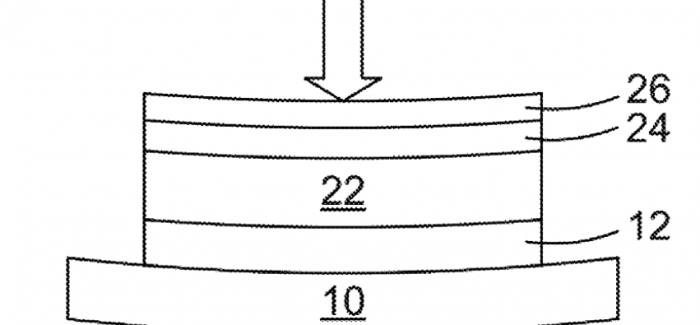Patent of the Month – Piezoelectric-Based Solar Cells
Editor | On 28, Aug 2018
Darrell Mann
Patent of the month this month takes us to a duo of inventors at the University of South Florida. US9,911,540 was granted on 6 March… an apparently good day for inventions since we had half a dozen good candidates for this month’s best-of award (honourable mention to 9,909,460, ‘Quantum Otto Engine’, which seems like a pretty big step forward in a potentially exciting technology first conceived in 1959). The South Florida invention, edged its way in to the lead because, frankly, it was much easier to read, and the elegance of the solution was much clearer to our lay-person eyes. Here’s what the inventors had to say about the background to their work:
The two main challenges in solar cell technology are the cost and the energy conversion efficiency of solar cells. Different materials and structures have been tested for several decades to address these challenges. As a result, the technology has evolved from the first solar cell generation, starting with crystalline silicon based p-n junctions, to the third generation, which includes organic photovoltaics (OPVs), dye sensitized solar cells (DSSCs), and perovskite (PVSK) solar cells. While the choices of the photoactive material in different devices (organic semiconductors in OPVs, dyes in DSSCs, and perovskites in PVSKs) are mainly based up on which materials provide strong light absorption and efficient charge generation, the device structures must be designed to collect the charges efficiently from the photoactive materials and transfer the charges to the device electrodes. The approach for selective collection of electrons from photoactive layers in OPVs, DSSCs, and PVSKs is to use a layer of a material, referred to as an electron transport layer (ETL), having an energy structure that can block holes but is transparent to electrons so as to enable electron transport.
The energy levels in the ETL and the energy barrier between ETL and the photoactive layer are critical to achieve high energy conversion efficiency in a device. Therefore, many different materials have been tested for use in forming ETLs in OPVs, DSSCs, and PVSKs. These materials include metal oxides, such as titanium oxide (TiO.sub.2) and zinc oxide (ZnO), and organic materials. Although, in theory, some materials should be more effective in improving device characteristics, in practice, significant improvement has not been achieved when ETL materials having matched energy levels have been used. This is mainly due to the other requirements for ETLs, such as optical transparency and high mobility of carriers. The combination of all the requirements of an ETL has limited the choice of material for ETL formation to only a few materials. For instance, TiO.sub.2 has been the dominant ETL in DSSCs for more than two decades.
From the above discussion, it can be appreciated that it would be desirable to have alternative ETLs that provide improved energy conversion efficiency.
The main conflict being addressed, in other words, concerns the desire to reduce energy losses being prevented by parallel needs for optical transparency and high carrier mobility (how quickly an electron can move through a metal or semiconductor). Here’s how we might map these conflicts on to the Contradiction Matrix:

And here’s what the inventors have done to resolve the problem:
A solar cell comprising: a transparent [Principle 32, Colour Change] electrode; a photoactive layer; and an electron transport layer positioned between the transparent electrode and the photoactive layer [Principles 3, Local Quality, and 5, Merging] , the electron transport layer being made of a piezoelectric material [Principle 35, Parameter Change] that is mechanically deformed [Principle 15, Dynamics] such that it generates a voltage or charge [Principle 28, Mechanics Substitution] that modifies an energy barrier between the electron transport layer and the photoactive layer.
Simple when you know how. Also a good example, were we to be using the Principles to generate the solution rather than reverse engineer the South Florida solution, of the need to generate many ideas from each of the Inventive Principles and then explore different combination of those ideas. i.e. there is evidence of six inventive steps in the solution. And that’s just the basic invention – reading the full patent you’ll see several more in the ancillary claims.
Borderline genius.



